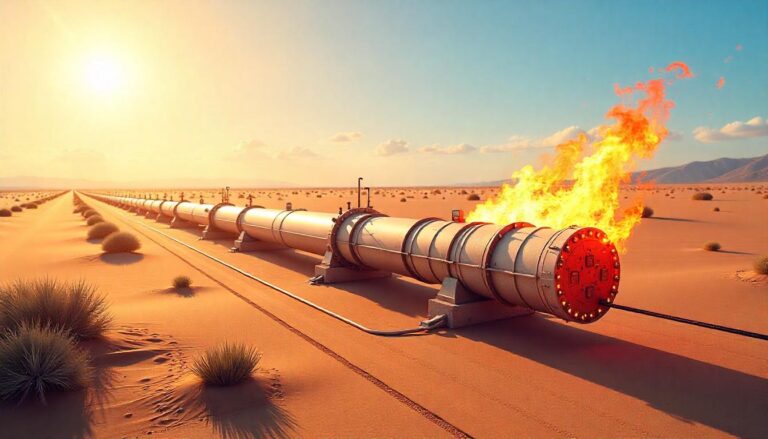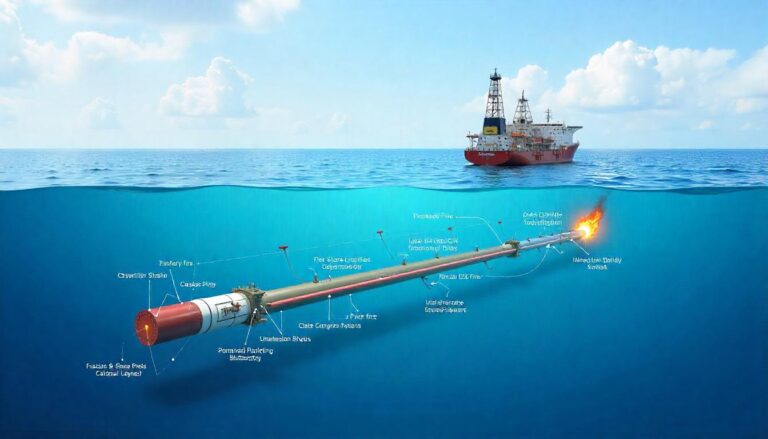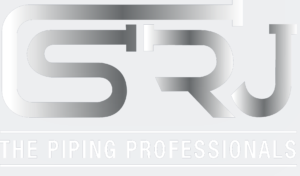Strategic Blueprint for Fire Safety in Pipeline Design
Table of Contents
The specter of pipeline fires looms large in the industrial sector, posing significant threats to human life, environmental integrity, and operational continuity. As the scale and complexity of pipeline networks expand, coupled with increasing regulatory scrutiny, a robust and strategically integrated approach to fire safety is no longer optional; it has become an imperative.
This expert guide provides a comprehensive blueprint for navigating the complexities of fire safety in pipeline design, offering actionable insights and forward-looking strategies for senior engineers, project directors, and facility owners.
Through a comprehensive examination of risk assessment, material selection, emergency systems, and training protocols, we aim to equip you with the knowledge and tools necessary to construct resilient, fire-safe pipeline infrastructure that safeguards your assets and the communities they serve.
The Evolving Industrial Landscape
The industrial landscape is undergoing a period of profound transformation, driven by several key macro-trends that directly impact pipeline design and fire safety.
- Firstly, increasingly stringent regulatory frameworks, spearheaded by bodies such as the NFPA (National Fire Protection Association) and the API (American Petroleum Institute), are raising the bar for safety standards and compliance.
- Secondly, the global push for sustainability demands more environmentally responsible practices, including the reduction of fire-related risks and the implementation of eco-friendly fire suppression systems.
- Thirdly, the advent of digital transformation, with technologies such as AI, IoT, and advanced sensor networks, is creating opportunities for real-time monitoring, predictive maintenance, and automated emergency response, thereby enhancing fire safety capabilities.
- Ultimately, the increasing emphasis on resilience and business continuity necessitates robust fire protection strategies that minimize downtime and ensure operational stability in the event of unforeseen events.
These trends necessitate a proactive and adaptive approach to fire safety in pipeline design, moving beyond traditional methods to embrace innovation and best practices.

Strategic Imperatives for Fire Safety in Pipeline Design
To effectively address the challenges and opportunities presented by the evolving industrial landscape, industrial leaders must prioritize the following strategic imperatives:
Risk-Based Design and Assessment
A fundamental imperative is to adopt a risk-based approach to pipeline design, integrating fire safety considerations from the earliest stages of project planning. This involves conducting comprehensive fire risk assessments to identify potential ignition sources, flammable materials, and vulnerable areas along the pipeline route.
The evaluation should consider factors such as pipeline operating conditions, environmental factors, proximity to populated areas, and potential external threats, including vandalism and natural disasters. By quantifying the likelihood and consequences of fire events, engineers can prioritize mitigation measures and allocate resources effectively.
Furthermore, the risk assessment should be a dynamic process, regularly updated to reflect changes in operating conditions, regulatory requirements, and technological advancements. Proactive risk assessment not only minimizes the likelihood of fire incidents but also optimizes the design for cost-effectiveness and operational efficiency.
Material Selection and Passive Fire Protection:
The selection of appropriate materials and the implementation of passive fire protection (PFP) systems are crucial for enhancing the fire resistance of pipelines. Fireproof materials, such as intumescent coatings, cementitious materials, and fire-resistant alloys, can significantly delay the escalation of a fire and protect critical pipeline components from structural damage.
PFP systems should be designed to withstand the expected fire intensity and duration, providing adequate insulation to prevent critical temperatures from being reached. Factors such as cost, durability, and ease of application should be taken into consideration when selecting PFP materials.
Furthermore, regular inspections and maintenance of PFP systems are essential to ensure their continued effectiveness. The use of advanced materials and PFP technologies represents a proactive approach to fire safety, minimizing the potential for catastrophic failures and safeguarding personnel and infrastructure.
Emergency Shutdown Systems and Automation
Emergency shutdown (ESD) systems and automation play a vital role in mitigating the impact of pipeline fires by rapidly isolating the affected section and preventing the release of additional flammable materials. ESD systems should be designed to automatically activate in response to fire detection signals, isolating valves, shutting down pumps, and initiating fire suppression measures.
The system should be redundant and fail-safe, ensuring reliable operation even in the event of component failures. Automation technologies, such as remotely controlled valves and intelligent monitoring systems, can enhance the speed and effectiveness of emergency responses.
Real-time data from sensors and cameras can provide operators with valuable information about the fire’s location, intensity, and spread, enabling them to make informed decisions and coordinate response efforts. The integration of ESD systems and automation represents a proactive approach to fire safety, minimizing the potential for escalation and reducing the overall impact of fire incidents.
Sustainability is no longer a buzzword; it’s a core business imperative. Industries are actively seeking ways to reduce their environmental footprint, conserve resources, and improve energy efficiency. In piping design, this translates to selecting sustainable materials, optimizing system layouts to minimize pressure drops and energy consumption, and implementing water and wastewater treatment systems that reduce water usage and minimize discharge.
Comprehensive Training and Preparedness
Adequate fire safety requires a well-trained and prepared workforce that can respond quickly and effectively in the event of a fire. Comprehensive training programs should be developed for all personnel involved in pipeline operations, covering topics such as fire prevention, hazard recognition, emergency response procedures, and the proper use of fire suppression equipment.
Training should be conducted regularly, with refresher courses and drills to reinforce key concepts and skills. Furthermore, clear lines of communication and well-defined roles and responsibilities are essential for effective emergency response.
Regular simulations and tabletop exercises can help identify potential weaknesses in the emergency response plan and improve coordination among different teams and agencies.

Advanced Methodologies & Innovations
The field of pipeline fire safety is constantly evolving, with new technologies and methodologies emerging to enhance protection and mitigation capabilities.
AI-Powered Risk Assessment and Predictive Maintenance
Artificial intelligence (AI) is revolutionizing risk assessment and predictive maintenance in pipeline operations. AI algorithms can analyze vast amounts of data from sensors, historical records, and weather patterns to identify potential fire hazards and predict equipment failures before they occur. This allows operators to proactively address potential issues, reducing the likelihood of fire incidents.
AI can also be used to optimize maintenance schedules, ensuring that critical equipment is inspected and repaired promptly. The use of AI in risk assessment and predictive maintenance represents a significant advancement in fire safety, enabling operators to anticipate and prevent potential problems before they escalate.
Advanced Fire Suppression Systems
Traditional fire suppression systems, such as water sprinklers and foam systems, are being supplemented by advanced technologies, including water mist systems and gaseous fire suppressants. Water mist systems use fine droplets of water to cool the fire and displace oxygen, providing effective fire suppression with minimal water damage.
Gaseous fire suppressants, such as inert gases and halocarbon agents, are non-conductive and non-corrosive, making them ideal for protecting sensitive electronic equipment. These advanced fire suppression systems offer enhanced performance and environmental benefits compared to traditional methods. Furthermore, they can be integrated with automated detection and activation systems for rapid and targeted fire suppression.
Remote Sensing and Monitoring Technologies
Remote sensing and monitoring technologies, such as drones, satellite imagery, and thermal cameras, are providing operators with enhanced capabilities for detecting and monitoring pipeline fires. Drones can be equipped with thermal cameras to detect hotspots and identify potential ignition sources along the pipeline route.
Satellite imagery can be used to monitor large areas and detect changes in vegetation or ground temperature that may indicate a fire hazard. Thermal cameras can be deployed at critical pipeline locations to monitor equipment temperature and detect overheating conditions.
Risk Mitigation & Resilience Strategies
Effective risk mitigation and resilience strategies are essential for ensuring the long-term safety and reliability of pipeline infrastructure.
Layered Defense Approach
A layered defense approach involves implementing multiple layers of protection to reduce the likelihood and consequences of fire incidents. This includes physical barriers, fire detection systems, fire suppression systems, and emergency response procedures. Each layer of defense provides a backup in case one layer fails.
For example, a physical barrier, such as a firewall, can contain a fire and prevent it from spreading to adjacent equipment. A fire detection system can alert operators to a fire in its early stages, allowing them to take prompt action. A fire suppression system can extinguish the fire before it causes significant damage.
Redundancy and Diversity
Redundancy and diversity are key principles for designing resilient pipeline systems. Redundancy involves providing backup systems or components that can take over in the event of a failure. For example, a pipeline can be designed with multiple parallel lines, allowing them to continue operating even if one line is damaged.
Diversity involves using different types of equipment or systems to perform the same function. For example, a pipeline can be protected by both a water sprinkler system and a gaseous fire suppressant system. This ensures that even if one system fails, the other can still provide protection.
Business Continuity Planning
Business continuity planning involves developing a plan for how to continue operations in the event of a fire or other disruption. The plan should identify critical business functions and the resources needed to support them.
It should also outline procedures for recovering from a fire, including restoring damaged equipment, resuming operations, and communicating with stakeholders. Business continuity planning is essential for minimizing downtime and ensuring that the organization can continue to operate effectively in the face of adversity.

Future Outlook & Expert Predictions
Looking ahead, the field of pipeline fire safety is poised for significant advancements, driven by technological innovation and evolving regulatory requirements.
Increased Automation and Remote Monitoring
The trend towards increased automation and remote monitoring will continue, with AI and machine learning playing a growing role in risk assessment, predictive maintenance, and emergency response. Remote sensing technologies, such as drones and satellite imagery, will become more sophisticated and widely used for detecting and monitoring pipeline fires.
Greater Emphasis on Sustainability
Sustainability will become an increasingly important consideration in pipeline design and fire safety. This will drive the adoption of eco-friendly fire suppression systems, the use of recycled materials, and the implementation of energy-efficient designs.
Integration of Digital Twin Technology
Digital twin technology, which creates a virtual replica of a physical asset, will enable operators to simulate fire scenarios, optimize fire protection strategies, and train personnel in a safe and realistic environment.
Stricter Regulatory Standards
Regulatory standards for pipeline fire safety will continue to evolve, becoming more stringent and comprehensive. This will require pipeline operators to invest in advanced technologies and implement best practices to ensure compliance with regulations.
To prepare for these future changes, businesses should:
- Invest in research and development to stay abreast of the latest technologies and methodologies.
- Develop a culture of safety that prioritizes fire prevention and emergency preparedness.
- Establish strong relationships with regulatory agencies and industry organizations.
- Invest in training and development to ensure that personnel possess the necessary skills and knowledge to operate and maintain pipeline systems safely and effectively.
Conclusion
The strategic imperatives outlined in this guide represent a crucial framework for ensuring fire safety in pipeline design. By embracing a risk-based approach, prioritizing material selection and passive fire protection, implementing emergency shutdown systems and automation, and investing in comprehensive training and preparedness, industrial leaders can significantly reduce the likelihood and consequences of pipeline fires.
Furthermore, by staying abreast of the latest technological advancements and regulatory requirements, businesses can maintain a competitive edge and ensure the long-term safety and reliability of their pipeline infrastructure. Expert-driven planning is not just a best practice; it is a necessity for navigating the complex challenges of the modern industrial landscape.
Schedule a strategic consultation with SRJ Piping India’s experts to discuss your pipeline fire safety needs and develop a customized solution tailored to your organization’s specific requirements.
Integrating fire safety protocols into pipeline design isn’t just regulatory compliance—it’s a critical investment in operational continuity and human safety. As industrial facilities evolve, proactive fire prevention in piping systems becomes non-negotiable.
Deepen your safety knowledge with these related resources:
Explore our specialized services:
Industry insights beyond our blog:
For facility managers and engineers, continuous education on fire safety integration is paramount. Contact our experts for pipeline design assessments or browse our project portfolio to see safety-first solutions in action.
Planning Fire-Safe Pipeline Systems?
SRJ Piping India supports you in integrating passive fire protection, emergency shutdown systems, and automation into compliant, risk-resilient pipeline designs.
